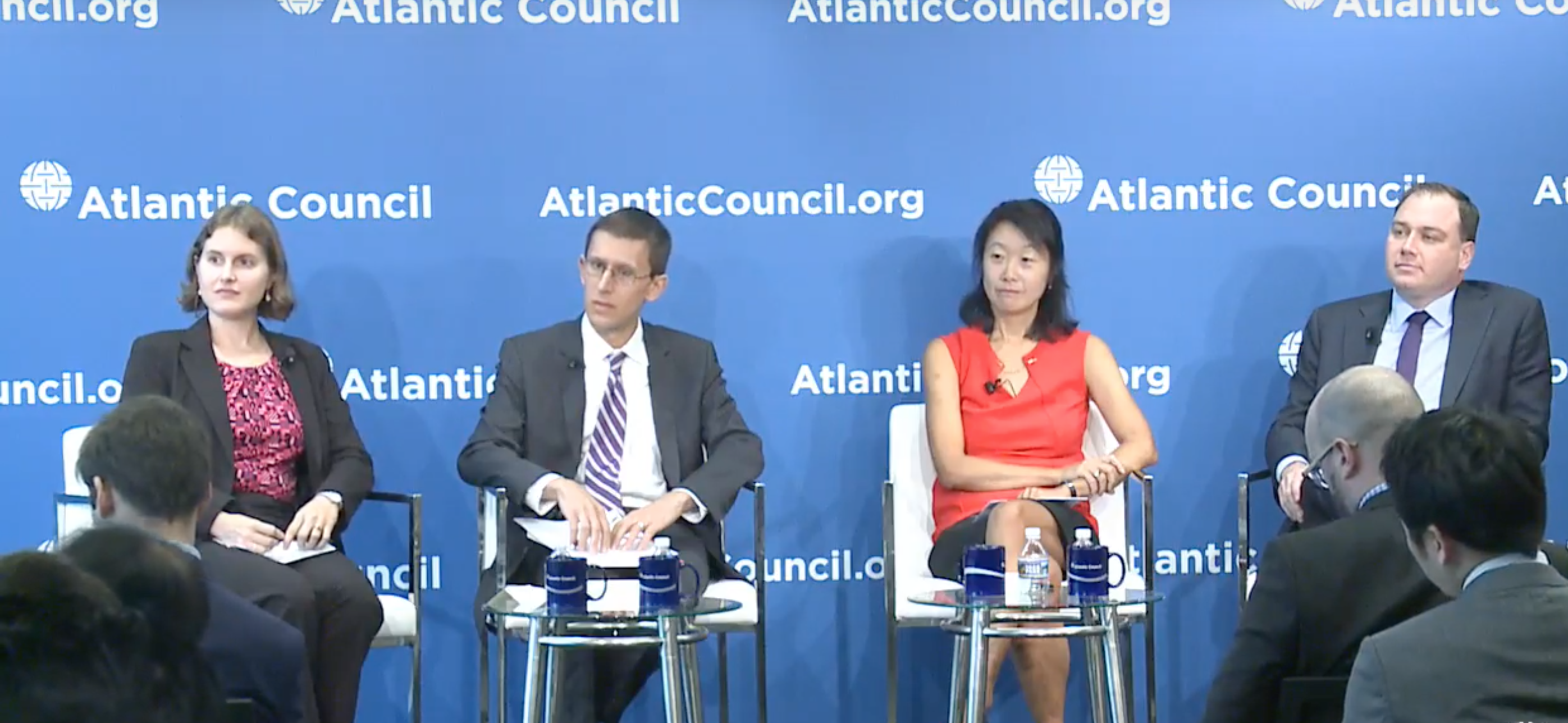 Washington’s simmering trade war with and tariffs against China are creating some unintended consequences for the U.S. military and its relationships with partners in the Pacific, a panel said today.
Washington’s simmering trade war with and tariffs against China are creating some unintended consequences for the U.S. military and its relationships with partners in the Pacific, a panel said today.
Speaking Thursday at the Atlantic Council in Washington, D.C., Yuki Tatsumi, co-director of the East Asia Program at the Stimson Center, said President Donald Trump’s imposition of tariffs on steel and aluminum and threats to impose them on automobiles have made Japan and China “kind of strange bedfellows” when it comes to dealing with the United States on economic issues – whereas, in the defense world, Japan would typically stand with the United States in seeking to push back against China’s military aggression.
So far, it hasn’t translated into closer military cooperation between Tokyo and Beijing beyond seeking some “confidence-building steps” to avoid miscalculations in sea or air incidents.
On trade overall and expanding economies, she added that Japanese Prime Minister Shinzo Abe and Taiwanese President Tsai Ing-wen are pursuing a “free and open Indo-Pacific.” They are trying to keep the idea of the Trans Pacific Partnership alive as a counter to China’s One Belt/One Road Initiative, but the United states withdrew from the partnership at the start of the Trump Administration.
Daniel Kliman, a senior fellow at the Center for a New American Security, said China and the United States are competing “to set the terms for the 21st century” in the region, both economically and militarily.
Right now, “virtually no nation [but Cambodia] wants China’s view to prevail,” he said, with China looking at the Indo-Pacific region as its own sphere of influence. “The stakes are very high,” he added.
And Beijing has taken advantage of the Trump Administration’s withdrawal from the regional trade partnership and its imposition of tariffs, and has approached Japan and India with a “we’re all in the same boat here” position to shore up its idea of a sphere of influence.
A key element to that strategy is China’s One Belt/One Road initiative of building highways, ports, bridges and dams across Asia and into Europe and Africa, but there have been some bumps in that highway recently that caught Beijing’s attention.
Brian Harding, deputy director of the Southeast Asia Program at the Center for Strategic and International Studies, said China learned a lesson recently in trying to push itself on a now-unwilling partner. With a change in government, Malaysia canceled billions of dollars in future infrastructure projects with Beijing, saying the terms were too much in China’s favor and endangered its economic independence.
With that as background, the Chinese leadership “is recalibrating when things go wrong” and are now seeking “on-the-ground intelligence” before investing in risky projects. This had not been the practice in the recent past.
Kliman added that, although Japan and India have been approached in this charm offensive to work together with China on building infrastructure in the region and investing in its development bank, “they are not willing to endorse” the Belt and Road plan.
On the defense side, there has been a lot of continuity between the Trump and Obama administration. Examples cited by the panel included helping to professionalize and modernize the armed services and police forces in Southeast Asia, exercising jointly with Australia and Japan, maintaining forces in South Korea and a naval presence Singapore, and exploring training opportunities in humanitarian and disaster relief with Taiwan.
In Japan, while there have been doubts since 2000 about the United States’ staying power in the Pacific, Tatsumi said the Abe administration is downplaying President Donald Trump’s tweets on security arrangements and alliances “but paying attention to what Secretary [James] Mattis says” about regional security.
With the exception of “backsliding” on the part of the Philippines when it comes to military exercises and training, American allies like Japan, Australia and South Korea are in agreement that, on the trade side of security, they are asking the same question, Kliman said: “How do you mitigate China’s investment in your technology sector?”
Further complicating the situation in the Pacific, as China tries to expand its influence, is that Russia does not want to be outdone by China, Kliman said in answer to an audience question. As a major nuclear power, Moscow “does not want to become a junior partner” to China there.
Russia has taken to showing off its strength in the region through bolstering its arms export business to nations such as Indonesia and Vietnam, where it is the largest supplier. Moscow is also courting the Philippines to buy arms from it rather than the United States.
Although the U.S. and India recently signed a major security agreement and agreed to joint exercises in India for the first time, India “is more and more having to choose between the U.S. and Russia” when it comes to buying sophisticated military hardware, Kliman said. Russia is also the largest arms supplier to India.
India, Indonesia and Vietnam all are working on the administration to exempt them from sanctions for trading with Russia.





